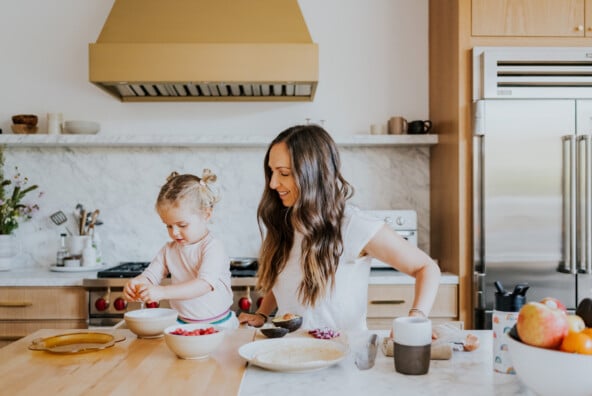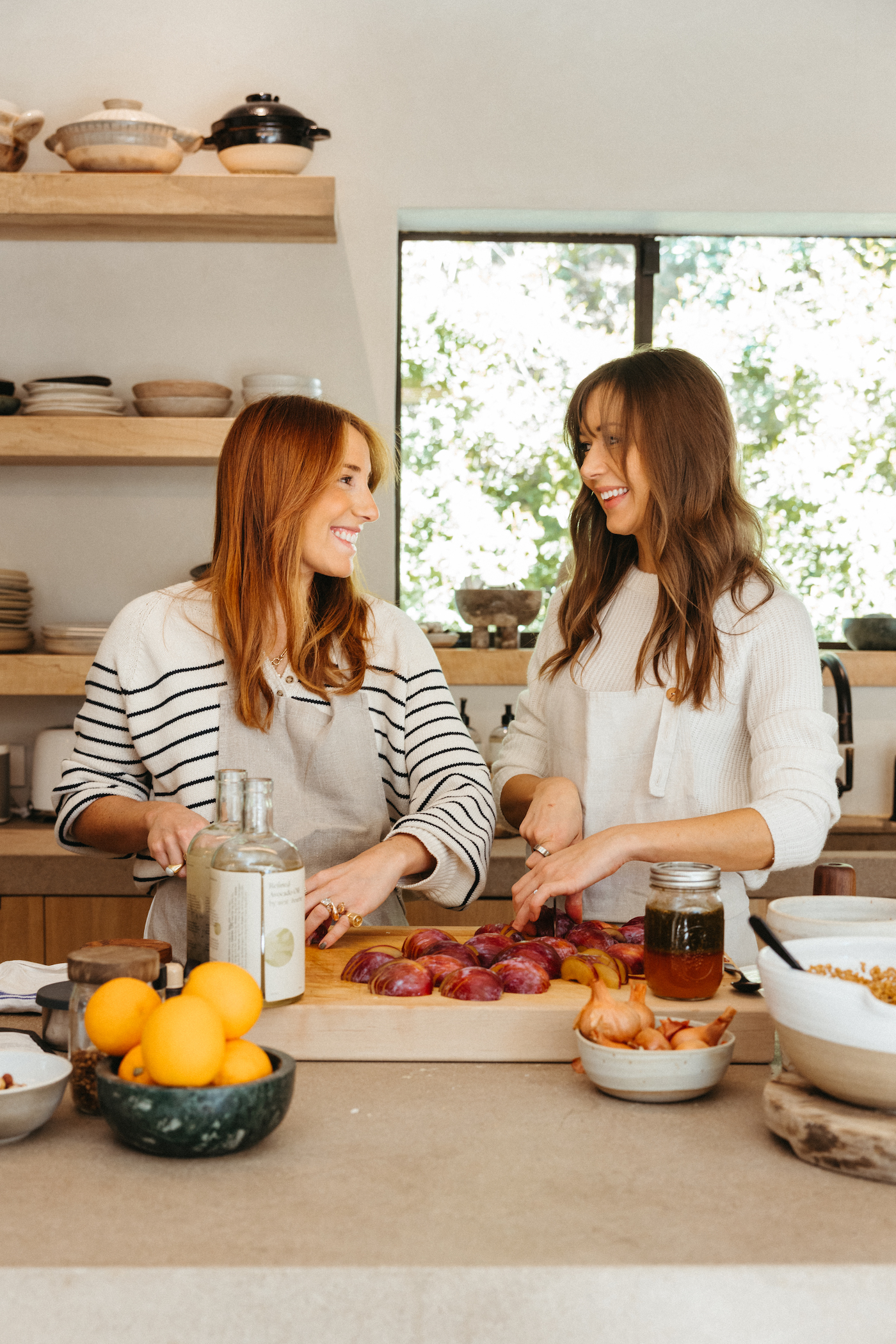The algorithm knows something we don’t. Just scroll through your FYP or Instagram feed and it won’t take long to notice—we’re at risk of engaging more with the algorithm than we are with our own lives. And at the risk of going full Dooms Day here, if we aren’t immune, neither are our kids. Lately, I’ve been exploring how to become an opt-out family—and it’s looking more appealing every day.
You could argue that technology has made our lives simpler (I’ll never not be thankful I can order groceries from my phone and I live by my cleaning app). Still, I can’t avoid the pull that something needs to change. When I worry about my kids, the source of it is almost always connected to technology. Will they feel left out? Will they only ever just want more things? Will they struggle with body image or shame? Will they see something they’re not supposed to see? It all comes back to the phone. And so the answer is obvious—isn’t it?


In a world where we’re constantly trying to “strike the balance,” wondering “How much is too much?” and ultimately seeking an answer grounded in truth, I’m craving something more black and white. “When we’re at the mercy of constant time management and check-ins and parental controls and screen time charts,” author and editor (and former influencer) Erin Loechner points out, “We’re setting ourselves up as tech managers, rather than parents and mentors and trusted confidantes.”

Erin Loechner is an editor and author who shirks the myth of social media marketing and writes award-winning books the old-school way: long walks, steno pads, curiosity, and a cabin in the woods.
The idea of taking parental controls (not to mention arguments about screen time) completely off the table is certainly appealing. But… is it really possible to remove technology to such a degree? That mountain seems strenuous—and I’m not sure I’m conditioned to climb it.
But you can’t climb a mountain without a guide. And thankfully, Erin’s important work has paved a path that many have discovered to be more open, vast, and free than the alternative. In her most recent book, The Opt-Out Family, Loechner brings forward the research and resources to give kids what technology can’t. I had the privilege to chat with Erin about her own opt-out journey—and how we can create a life for our family that far out-rivals the algorithm.
How do you define “opting out” in today’s fast-paced, consumer-driven society? What does it mean for families?
Opting out is asking ourselves a simple question: If technology is the future, is it the future we want? Practically speaking, for a family, here are some resources to help you opt out. It looks a lot like this:
O.P.T. O.U.T.
Offer built-in alternatives to technology.
Protect childhood innocence and free play.
Teach the benefits of being different.
Offset consumption with creation.
Unite varied and diverse social circles.
Trust (and build trust with) your children.
Was there a pivotal moment that made you realize the need to embrace a slower, more intentional lifestyle?
There were many, but I do remember a big one from my days as an early influencer. We were scheduled to shoot a before and after bedroom makeover for my HGTV.com show, and I’d just finished styling the space when a family friend stopped in with her baby. She’d wanted to see the latest construction project and plopped her sweet son on the new comforter, and of course, he promptly threw up. I’m mortified to admit that my first thought was: No! We haven’t shot that yet! We’re losing daylight and are on deadline! I don’t have time to launder it!
I realized at that moment I didn’t want to be a person who prioritized things over people, and my career was in direct conflict with that mindset. Over time, there were many more instances where it became clear that I could either choose to love things well or love people well, but I could never do both. Certainly not while building a life on a social media platform that is designed to manipulate all of its users—creator and consumer alike.
In short: I chose people.
Over time, there were many more instances where it became clear that I could either choose to love things well or love people well, but I could never do both.

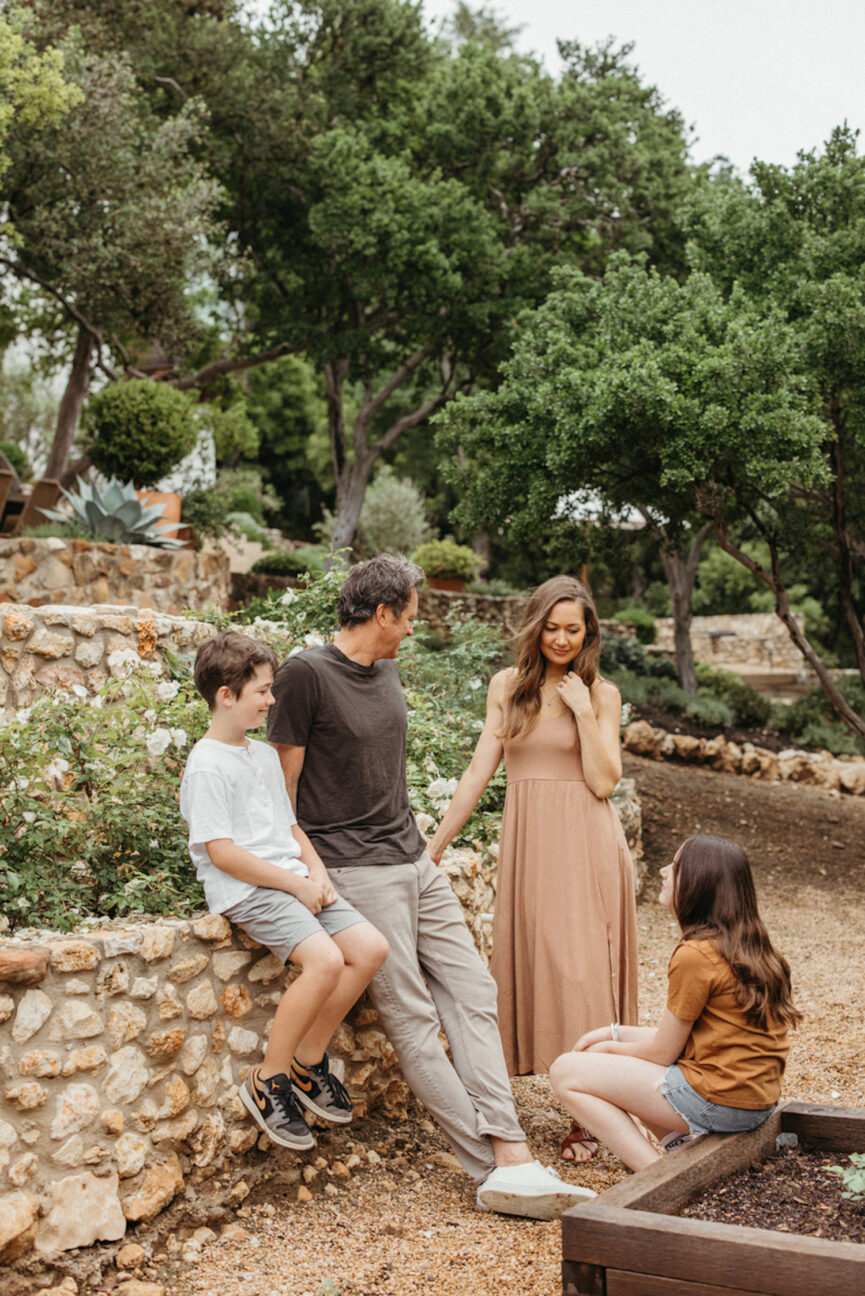
What advice would you give to mothers and caregivers who feel overwhelmed by the idea of making significant lifestyle changes?
In many cases, opting out is far easier than you think. It’s moderation that is hard. When we’re at the mercy of constant time management and check-ins and parental controls and screen time charts, we’re setting ourselves up as tech managers, rather than parents and mentors and trusted confidantes. By prioritizing one proactive decision now (No smartphone), we’re saving ourselves from prioritizing the countless reactive decisions that come later (Which apps are OK? Which are safe? Is she spending too much time with it? What if she sees something inappropriate? What if he hacks the settings? What if they encounter bullying? A predator? And the list goes on…). Once you begin to consider the topic from a first-order thinking vs. second-order thinking perspective, it’s easy to see which choice offers less overwhelm in the long run.
Technology sells us on the idea of an optimized life. By opting out, have you found more friction in day-to-day life?
Yes, definitely. Grocery shopping, travel, scheduling commitments or meetings—all of these things can be easier and often cheaper with a smartphone, so there’s friction when you learn to live life without one. But it’s actually just a different kind of friction. For every benefit a smartphone offers, there is, of equal value, a cost. Smartphones make it easier to deposit a check. And also, easier to spend it. Easier to save time. Easier to waste it. Easier to send an encouraging text. Easier to receive a discouraging one.
And, in the case of social media, easier for our kids to find what they’re searching for. And easier than ever for them to lose themselves in the hunt.
Smartphones make it easier to deposit a check. And also, easier to spend it. Easier to save time. Easier to waste it. Easier to send an encouraging text. Easier to receive a discouraging one.
And, in the case of social media, easier for our kids to find what they’re searching for. And easier than ever for them to lose themselves in the hunt.

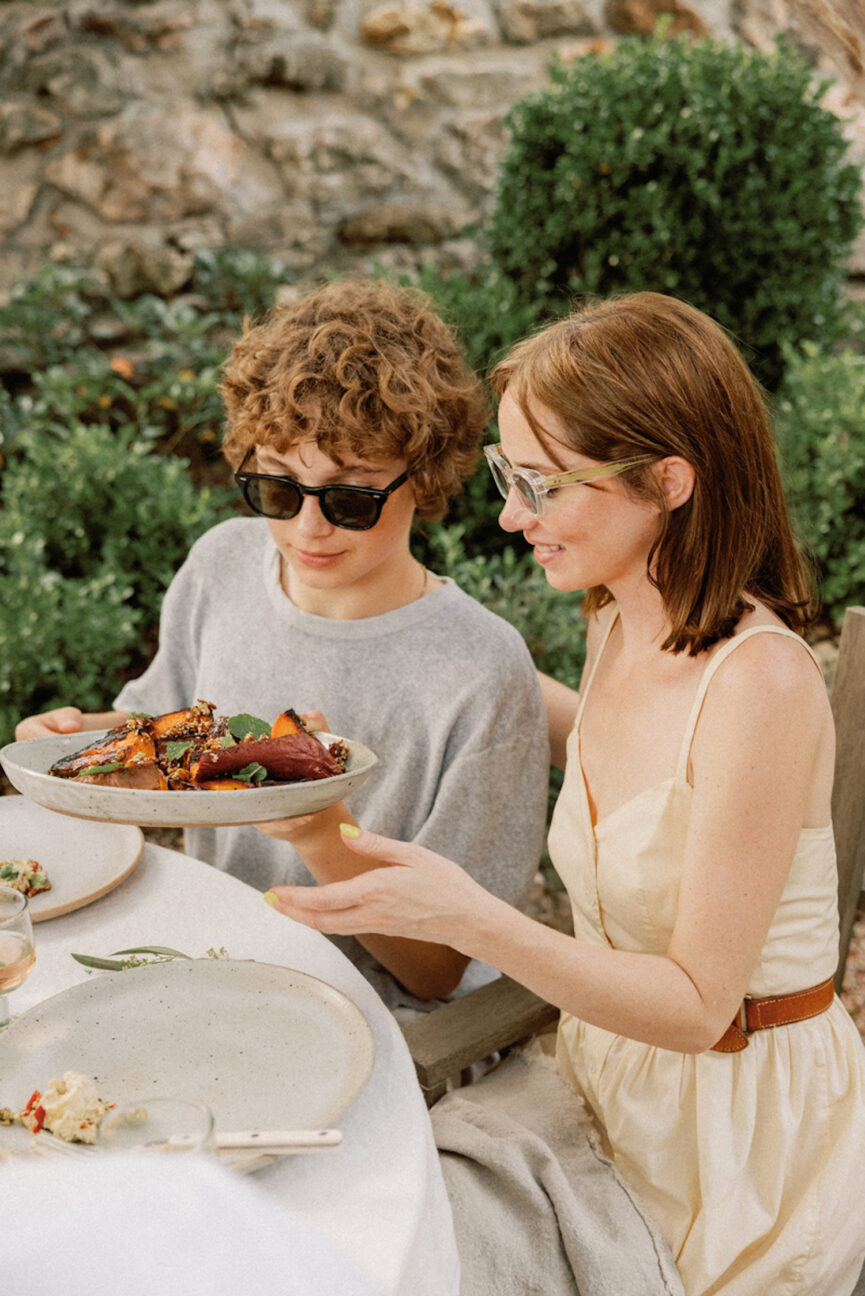
“Kid-safe” starter phones seem to be gaining popularity among families seeking a safer way for kids to interact with technology. What are your thoughts on these devices?
Truthfully, I’m not on board. It’s lovely marketing yes, but giving a child a lookalike smartphone in the name of safety* communicates to them that they aren’t safe without a smartphone. And the research doesn’t bear that out.
The fallacy is this: we are failing to imagine a future in which our children might not want a smartphone. Knowing what we know about the research on cognition, mental health, and addiction, knowing that 71% of parents believe smartphones do more harm than good, why are we helping our kids navigate something they’d never choose once they’re old enough to choose well?
*A note about safety:
I spoke with so many experts and specialists while researching this book. The consensus was overwhelming: any personal device short-circuits our child’s ability to trust themselves to observe and understand their immediate surroundings. Ken Trump, president of National School Safety and Security Services, cautions that phone communication can actually increase safety risks in the event of a school shooting. “During a lockdown, students should be listening to the adults in the school who are giving life-saving instructions, working to keep them safe,” he says. “Phones distract from that.”
And even among adults, smartphone distraction has been proven to hinder our ability to react swiftly in an emergency scenario. Security camera footage from San Francisco public transit reveals that a gunman was able to pull out his gun and “openly handle it at length without anyone noticing before he eventually shot a fellow passenger.”
The truth is, we should be far less concerned about what a smartphone might offer in an emergency situation, and far more concerned about what kind of emergency situation a smartphone might offer your child.


For families at the beginning of this journey, what are some small, manageable steps or built-in boundaries to start opting out?
Start with yourself, and start with these three steps. It’s a simple experiment that takes just two minutes but makes a profound impact on the way you navigate your own smartphone usage. As parents, we have to go first!
From there, focus on building a family culture that doesn’t outsource delight to a screen. We created a Playbook with some great built-in boundaries and guidelines to try.
As parents, we have the upper hand in delivering a memory that feels customized to our own unique family—no stats or metrics required.
For me, the light bulb came on when you explained how there’s a reason we’re drawn to certain things on social media: because ultimately, we want to be living that life or doing that thing. The goal now is to create experiences for our families that are more engaging than what they’re seeing on the phone. How has technology taught you to create moments and memories?
It’s funny—any influencer knows precisely what kind of post will perform best with his/her audience. If we want to promote our favorite winter read, most of us aren’t going to snap a photo of it at the bookstore. We’re going to bring it home and photograph it in front of a cozy fire crackling, fairy lights, soft blankets, open book, a mug of our favorite beverage nearby. Why? Because what we’re trying to capture is the moment, not the merch.
We can do this with our families, too. We can feed our kids, or we can take a few extra moments to make the meal special with candlelights and china, a custom playlist, a favorite dessert, a surprise guest, a bouquet of wildflowers—anything goes! Ultimately, that’s what we’re all after anyway—a few memories that feel sacred and delightful and surprising. As parents, we have the upper hand in delivering a memory that feels customized to our own unique family—no stats or metrics required.


What are some day-to-day ways to introduce activities and experiences that are more engaging than the alternative?
One of my favorite ways to engage my kids is a practice called strewing. It’s actually a classic educational method that’s rooted in the idea that a child cares more about an idea when they discover it independently, or “stumble upon” it accidentally. It’s tremendously engaging and surprisingly hands-off for the parent! In strewing, you simply lay out an assortment of things for a child to discover independently. Not too many, and not all at once, but enough for your child to notice within the home. Maybe you borrow a Benji Blu-ray from the library and leave it on the living room coffee table. Maybe you pull out your husband’s old Taekwondo nunchucks from the attic and leave them on the kitchen counter.
The effect is not unlike TikTok’s discovery page—a welcome mat for your child’s natural curiosity to be piqued, explored, and engaged.

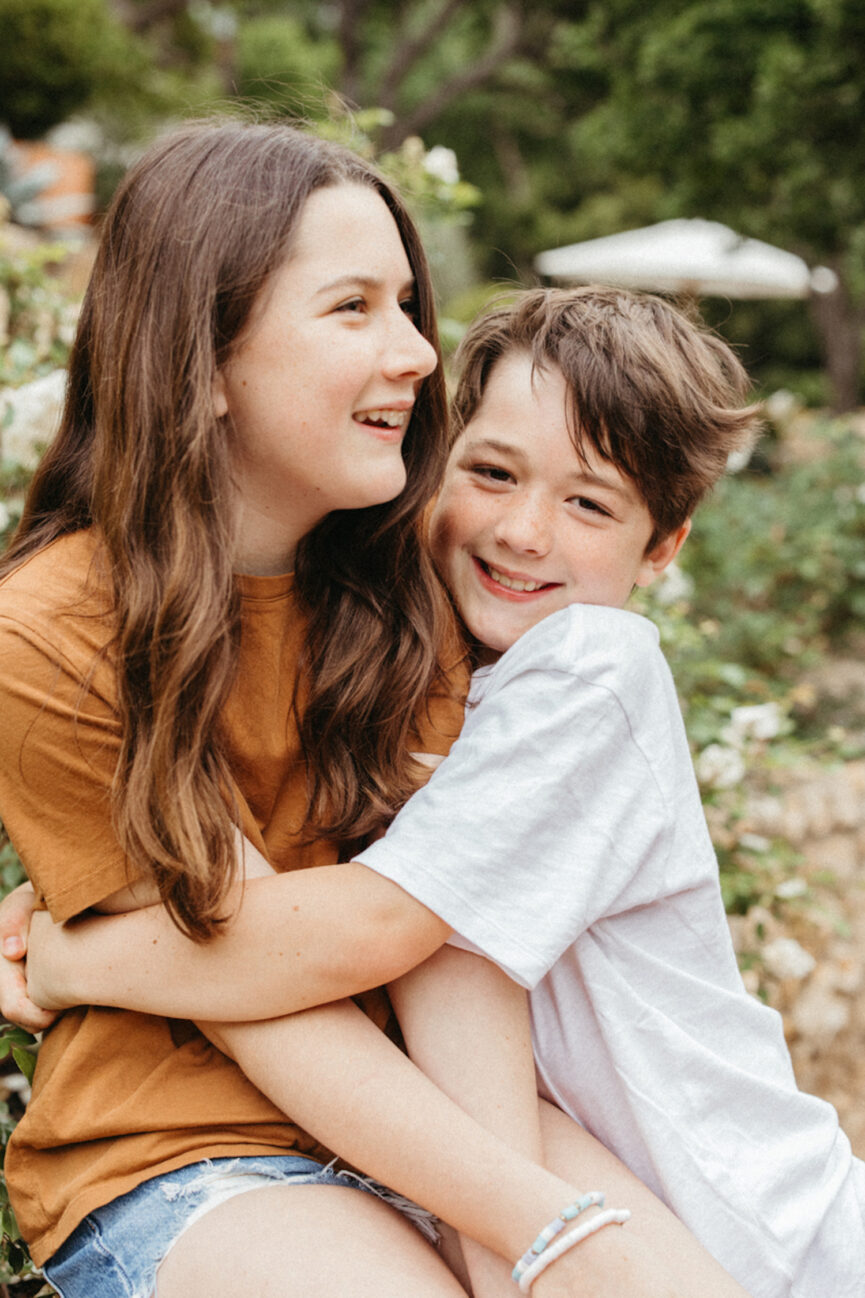
What are the biggest challenges in sustaining this lifestyle over time, and how do you address them?
Hands down, the biggest challenge is finding other people to join us. Humans are so relational at heart, and it hits us at our core when we make a lifestyle challenge that might cause any amount of perceived loneliness. We always suggest forming a (free!) Co-Opt-Out™ to navigate the change and advocate alongside other families in your own hometown.
What are some ways to keep the family engaged in this lifestyle as children grow older and are exposed to more external influences?
- Consider regular Opt-out getaways where everyone (yep, everyone!) leaves their device behind and heads to a dream destination of their choice. Whether ice cream or Iceland, spending time together without the temptation to check out will offer lifelong memories, intentional moments, and quality time together. After a few hours or days of resistance, your brain begins to balance and detox from constant dopamine fluctuations. The result? An insanely peaceful high that is impossible to recreate in the presence of technology.
- Consider watching The Social Dilemma to learn how social media manipulates on a grand scale.
- Look through a list of device-free summer camp options with your children.
- Listen as MIT professor Cal Newport convinces his students—and the world—to quit social media.
- Keep your Co-Opt-Out™ meetings active, engaged, and FUN.
I’m incredibly grateful that I get to live life alongside people who know me better than an Instagram ad does.
What has been the most rewarding aspect of embracing a slower, more intentional lifestyle for your family?
Our family knows each other deeply. We have the time, space, and presence to have long chats about anything and everything. We share similar values, hold each other accountable, challenge each other’s beliefs, and listen to each other’s dreams. We don’t just live under the same roof—we walk on the same foundation. It takes hard work and intentionality, but I’m incredibly grateful that I get to live life alongside people who know me better than an Instagram ad does.
Looking back, is there anything you would have done differently on your opt-out journey?
I would have allowed myself to opt out far sooner in my own career. It turns out you don’t need social media to have meaningful, successful work that you love!


How important is it for families to find a community or support system when choosing to live more intentionally? What advice do you have for finding or creating such a community?
It’s everything! I really, really recommend that strong and continuous efforts are made to form a Co-Opt-Out™ and that your home is offered as a low-tech hangout for your children’s friends. One of the best ways to find like-minded families is to participate, volunteer, and/or advocate alongside each other at tech-free events, rallies, and local digital literacy meetings.
Can we really lead the change to opt out as a society?
I think the most important thing we need to remember as parents is that we really, truly do have the power to effect change. If you don’t feel right about the role technology is playing in the life of your child at school, in sports, in church, at home, or anywhere at all, speak up! (Use our scripts, if you’d like.) Remember: it would have been impossible to envision a smoke-free restaurant or bowling alley or even airplane less than half a century ago. But when enough concerned citizens read the research and speak up, their ripples create a wave.
We have the opportunity to create a massive wave on behalf of ourselves and our children, and my deepest hope is that we’ll all be bold and revolutionary enough to try.




